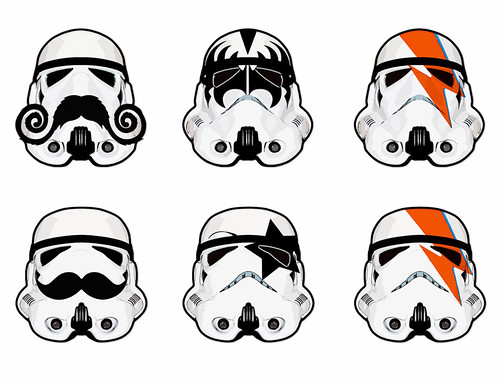Tagging mashups
February 18, 2014 in digital music by Dan Gravell

This week, some thoughts on tagging mashups by regular reader John Aydelotte. The floor is yours, John!
Much has been written about how to organize collections of digital music, but I have yet to see much information about organizing one of my favorite genres: mashups. I know... purists think it’s an abomination of good music and I freely admit they are not for everyone. Most of my music-loving friends either love them or hate them. Call it a weakness, or guilty pleasure, but once I became aware of the concept and heard a few good ones, I was hooked, and now seek them out on a regular basis.
Unfortunately, they defy easy organization. Most software can’t make heads-or-tails of a mashup. When trying to find the right combination of artist, album and song-title they will fail miserably. Here’s why:
- No identifiable album. A few are from compilation albums with a name, but most are individual releases.
- Artist is not consistent. Is it the groups whose tracks were used, or the person who combined them?
- Artwork might not exist. This seems to be improving with many newer mashups coming with embedded art.
- The fleeting nature of legally questionable music. Mashups are legally in a gray area and may not always be available before a takedown letter from a record label makes them disappear or move.
I now have close to 1000 mashup tracks, and until recently they were in a badly disorganized state. But last month I did find a good combination of tools and that allowed me to finally put this mish-mash of mashups into some semblance of order.
Before starting, some decisions need to be made. What will go into the ARTIST field? I eventually settled on putting the mashup creator’s name there, and the original track artists in the ALBUM ARTIST field. This is because I often search for the mashup-maker or DJ. I have seen this in reverse, which works better for some people.
Next, the content of the ALBUM field needs to be sorted out. Unless this is part of a compilation with a distinct album name I copy the contents of the TITLE field here. This is because most organizing software wants to use that field as the primary source for finding the artwork, and separating into folders. I used to put all mashups into a folder called “downloaded” with that same word in the ALBUM field. Then a software program I was trying out decided that all those songs were on the same album and needed the same artwork – and proceeded to overwrite all the artwork I already had! Never again!

I use MediaMonkey to accomplish all this tagging – it’s a flexible tool that also will rename everything the way I want once I am finished. Unfortunately, artwork isn’t MediaMonkey’s strength. In my experience it does find artwork, but it frequently isn’t correct and I end up finding better jpg files myself. There are many other tools that will do the same thing, so if you have a favorite tagger, by all means keep using it.
Bliss is the tool I found last month that blows others away when it comes to finding and tagging the album-cover artwork. It lets you put in rules that specify the size of the picture, and makes it easy to find tracks that are missing artwork. (Here’s where making that ALBUM field unique becomes very important for mashups – bliss also wants to use the same artwork for all songs on that album.) I don’t know exactly what online sources bliss uses to look up the artwork, but if I have the DJ name (masher) and the track name correct, and artwork exists, bliss seems to find it.
Let bliss find and tag what it can, and fix what it can’t. I try to keep things simple. If artwork for the track is available, use it. If not, I find a picture of the DJ or mashup artist and use that. Either way, I’m happier with a relevant picture popping up on my phone as each song plays.
I then let MediaMonkey rename the mashups in a \Artist\Album\Track format, and I’m finished.
A song that may have originally looked like this after downloading:
T:\Avicii vs. LMFAO vs. Montell Jordan - This Is How We Party Rock Levels (Stelmix vs. Skrillex 4' Mashup Radio Edit v2).mp3
Ends up like this:
T:\MixmstrStel 2\This is How We Party Rock Levels\This Is How We Party Rock Levels.mp3
Note that in the original name, the DJ name isn’t present. Plus the track name is so long that it likely won’t fit on your phone or mp3 player. The new system puts the artists whose tracks were used in the ALBUM ARTIST field. Because it has a unique album name, the artwork can also be unique to this track. This does create a lot of folders, but since my phone and other media players use the tagged data, I don’t have to think about them.
This isn’t a perfect system, but is the best way I’ve found to keep this type of music organized.
Thanks John! Got anything to get off your chest about music library management? get in touch and I'll publish your thoughts!
Thanks to qthomasbower and Fernando Schlaepfer for the images above.

